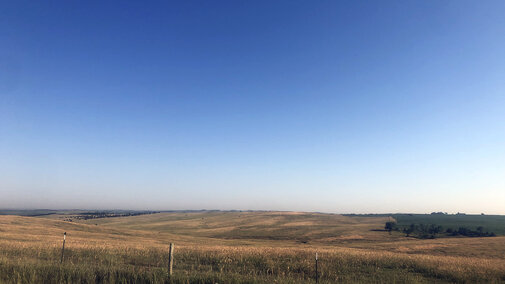2022 Pasture Rental Rates
What does it cost to rent pasture this year? Preliminary results from the Nebraska Farm Real Estate Market Survey were just released.
According to this year’s survey, the average monthly rent being paid to graze a cow-calf pair this grazing season has increased about 6% compared to last year. This is an overall state average with the range increase being 3% to 10% depending on the reporting district within the state. This increase does follow the overall trend of increasing land values as well as cropland rental rates across the state.
The North reporting district — which is primarily the Sandhills — has the highest average cow-calf pair monthly rate at just over $67 per month. The Northeast and Central districts are not far behind at $66 and $61.50 per month. The West district, the Panhandle, had the lowest rates at just over $43 per month. Everywhere else in Nebraska, it’s around the $51 to $58 per month rate.
Pasture rent can vary for many reasons. Involvement of the landlord in fence, water and management responsibilities have a big impact. Similarly, quality of the grassland, location of the pasture and cow size can potentially affect rates. Tradition, individual relationships and local demand all also may influence individual pasture rental rates.
Whether you are looking for pasture or have pasture to rent, it is always important to have a written lease agreement. These agreements can have a number of different stipulations or clauses, but they all should define the number of cattle and length of time (or stocking rate) and how an event such as a drought will be handled.
Fertilizing Cool-season Grass Pastures
By Brad Schick
Fertilizing cool-season grass is something many producers do each year while accounting for forage needs, the value of the forage and fertilizer costs.
Fertilization of smooth bromegrass pastures should occur late March through April. If the nitrogen is a single application, usually between 80 to 100 lbs. of actual N per acre is suggested for eastern Nebraska. The recommended application rate declines westward across the state with about 30 to 40 lbs. N per acre suggested for the Panhandle.
If doing split applications, usually it's two-thirds in the spring and one-third in the fall when growth resumes on the cool-season grasses. With fertilized pasture, be sure to include a rotational grazing plan that will effectively harvest the extra forage and provide the greatest return on the fertilizer investment.
Something to consider when deciding to fertilize cool-season grass pastures, or any pasture for that matter, is that during drought years the forage quality might still be very high even though yield might be reduced.
Research conducted in Eastern Nebraska has shown a 30% increase in forage yield with fertilization, and the economic optimum rate is between 80 to 120 lbs. per acre of actual N. A crude protein increase from 16% to 20% was seen with fertilizer applications up to 160 lbs. That is a lot of fertilizer, but it did increase crude protein and organic matter digestibility while decreasing NDF or neutral detergent fiber. Always use best management practices when applying fertilizer especially in pastures and fields near water sources such as ponds. Assure phosphorous and potassium levels are adequate for forage as well.
Brome pastures are hardy and we can and do graze them hard in Nebraska. Haying or grazing operations can benefit if managed correctly with fertilizer.

